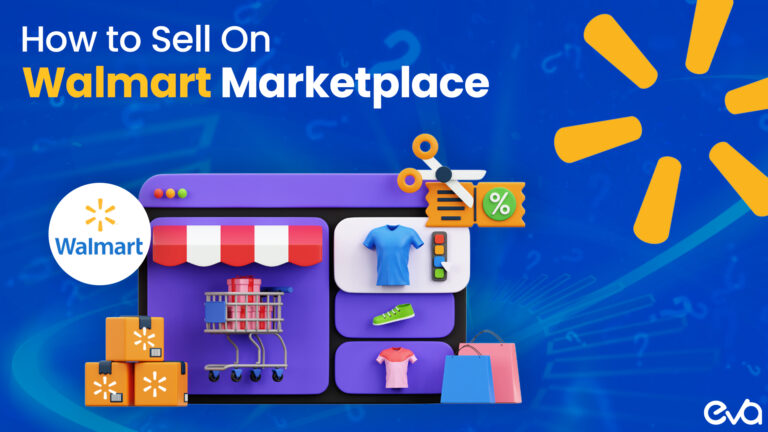Table of Contents
What is Amazon Marketing Services (AMS)?
Overview of AMS and Its Purpose
Amazon Marketing Services (AMS) is an essential advertising platform for sellers and vendors on Amazon.
It provides businesses with various advertising tools to increase visibility, drive sales, and build brand awareness.
As the world’s largest eCommerce platform, Amazon offers an extensive customer base, and AMS helps sellers reach these customers more effectively by targeting them with precision ads.
AMS is a central pillar of any serious Amazon marketing strategy, giving brands a competitive edge in a marketplace that is saturated with products.

Key Features of AMS
AMS provides multiple ad types to suit various seller needs:
- Sponsored Products: This is the most popular ad type, appearing in search results and product pages. It allows sellers to target specific keywords that drive relevant traffic.
- Sponsored Brands: These ads focus on building brand awareness. They allow sellers to showcase multiple products alongside their logo and custom messaging at the top of search results pages.
- Sponsored Display Ads: Sponsored Display Ads are more flexible, appearing both on and off Amazon reaching audiences based on their browsing behaviors.
Each ad type is equipped with detailed reporting and analytics, enabling sellers to optimize their campaigns continuously.
This is vital for maintaining competitiveness on Amazon’s ever-changing platform.
Why is Amazon Marketing Services Important?
Benefits of Using AMS for Sellers
AMS provides numerous advantages for sellers that can greatly enhance their presence on Amazon:
- Increased Product Visibility: AMS ensures that products are more visible, especially for competitive categories.
- Boosted Sales and Revenue: AMS campaigns can drive a large volume of targeted traffic, directly impacting sales.
- Brand Awareness: By using Sponsored Brands ads, sellers can build brand loyalty over time by increasing consistent exposure to their audience.
AMS has proven to be highly effective in helping brands grow by reaching the right customers at the right time.

Impact on Sales and Brand Visibility
Amazon Marketing Services plays a crucial role in increasing both sales and brand visibility. By placing products in premium positions on Amazon’s pages, AMS ads have a direct influence on sales.
Studies show that businesses that invest in AMS ads can see a significant increase in click-through rates (CTR) and conversions. These metrics highlight the efficiency of AMS in driving purchase intent.
Furthermore, Sponsored Brand ads help establish a strong brand presence, which, over time, improves brand recall and loyalty among Amazon shoppers.
The Role of AMS in Competitive Amazon Marketing
In a marketplace as competitive as Amazon, standing out is essential. AMS provides tools to differentiate your product by using advanced targeting options, allowing sellers to reach specific audience segments.
With data-driven targeting and optimization features, sellers can outperform competitors who are solely relying on organic reach.
AMS also levels the playing field between larger brands and smaller sellers. Smaller businesses can run highly targeted, efficient campaigns that allow them to compete effectively even with a limited budget.
How to Become Eligible for Amazon Marketing Services
H3: Requirements for Sellers to Access AMS
To access AMS, sellers must meet a few basic requirements:
- Professional Seller Account: Sellers must maintain a professional seller account.
- Product Catalog: At least one product must be listed on Amazon to run ads.
- Advertising Compliance: Sellers must follow Amazon’s advertising policies and guidelines to avoid disapproval of their campaigns.
AMS provides a streamlined setup process, making it easy for sellers to get started and begin advertising on Amazon.
Steps to Sign Up for AMS
Here’s a quick guide to signing up for AMS:
- Log in to your Amazon Seller Central account.
- Click on the “Advertising” tab and navigate to “Campaign Manager.”
- Select the ad type you want to create (Sponsored Products, Sponsored Brands, etc.).
- Follow the prompts to set up targeting, budget, and creative assets.
- Launch your first campaign!
Once you’re set up, the platform will provide real-time data on how your ads are performing.
Best Practices for Maintaining Eligibility
After gaining access to AMS, sellers need to ensure they remain eligible:
- Adhering to Policies: Always follow Amazon’s ad guidelines to prevent any disapprovals or penalties.
- Product Optimization: Keep product listings accurate and compliant with Amazon’s listing policies.
Regularly reviewing your campaigns and ensuring compliance will help maintain your AMS eligibility.
Types of AMS Ads
Sponsored Products
Sponsored Products are highly visible ads that appear in search results and product detail pages. Sellers can target specific keywords, product categories, or customer interests to ensure that their products appear in front of relevant audiences.
Sponsored Products are especially useful for driving sales because they directly connect customer intent (searching for a product) with an immediate opportunity to purchase.
Sponsored Brands
Sponsored Brand ads, previously known as Headline Search Ads, allow sellers to highlight their brand by showcasing multiple products at once.
They appear at the top of the search results, which is prime real estate on Amazon. Sponsored Brands are perfect for growing brand awareness and encouraging customers to explore more of your product offerings.

Sponsored Display Ads
Sponsored Display Ads go beyond Amazon’s marketplace, appearing on third-party websites and apps that are part of Amazon’s network.
These ads are excellent for retargeting visitors who have previously interacted with your product or brand but haven’t made a purchase yet.
Comparison of Different Ad Types and Their Uses
Each type of ad serves a unique purpose. Below is a quick comparison:
| Ad Type | Primary Use | Targeting Options | Visibility |
| Sponsored Products | Drive direct sales | Keywords, categories, interests | Search results, product pages |
| Sponsored Brands | Build brand awareness | Keywords, categories | Top of search results |
| Sponsored Display Ads | Retargeting, brand exposure | Interests, behaviors, views | On and off Amazon |
How to Optimize and Manage AMS Ads
Best Practices for Creating Effective Ads
Creating effective AMS ads requires strategic planning:
- Keyword Research: Thorough keyword research is essential. Target high-converting and long-tail keywords.
- Compelling Copy: Ad copy should highlight your product’s unique benefits.
- Quality Visuals: High-resolution images help grab customer attention and should be aligned with the ad copy.
- Objective-Based Campaigns: Your campaigns should always align with specific business goals, whether they are to drive sales or build brand awareness.
Targeting Options and Strategies
Amazon provides several targeting options to fine-tune your campaigns:
- Keyword Targeting: Target specific keywords that customers are searching for.
- Product Targeting: Aim for specific product categories or competitor ASINs.
- Audience Targeting: Retarget people who have previously viewed your products.
Advanced targeting strategies should combine multiple targeting methods for maximum reach and relevance.
Analyzing Ad Performance Metrics
AMS provides key metrics that sellers can track, such as impressions, clicks, CTR, and ACoS (Advertising Cost of Sale).
Tracking these metrics will allow sellers to fine-tune their campaigns and improve performance over time.

Tips for Adjusting Budgets and Bids
Successful AMS campaigns often rely on continuous adjustments to bids and budgets. Sellers should:
- Increase bids on high-performing keywords.
- Lower or pause bids on underperforming campaigns to save ad spend.
- Set up automated bidding strategies for greater efficiency.
Proper budget and bid management is crucial for optimizing ACoS and maximizing ROI.
Advanced Strategies for Using AMS Effectively
Combining AMS with Other Marketing Tactics
AMS campaigns are more effective when used in conjunction with other marketing strategies:
- Listing Optimization: Ensure your product listings are optimized with relevant keywords and high-quality images.
- Product Reviews: Programs like Amazon Vine can help you collect reviews to boost product credibility.
- Social Media and Email: Use these channels to further drive traffic to your Amazon listings.
Leveraging Data and Insights for Better Results
Analyzing search term reports and using Brand Analytics can provide crucial insights into consumer behavior.
Third-party tools also help sellers gather deeper insights and automate optimizations, which is essential for managing larger ad budgets effectively.

Case Studies of Successful AMS Campaigns
To showcase the success of AMS campaigns, here are some case studies:
- Brand A: Increased sales by 30% using Sponsored Products and Sponsored Display Ads through precise keyword targeting.
- Product B: Boosted brand awareness by 40% by running Sponsored Brands ads, driving long-term growth in brand recall.
These examples show that the combination of strategic targeting and continuous optimization can deliver outstanding results on Amazon.
How Eva Commerce Can Help?
Eva Commerce is more than just an eCommerce platform—it’s an AI-powered tool designed to help brands grow profitably across Amazon, Walmart, and other marketplaces.
Our unique platform integrates key data points such as inventory levels, conversion rates, and profitability metrics to create context-aware advertising strategies that align with your business goals.
Unlike traditional advertising platforms, Eva’s AI system goes beyond basic targeting. It integrates real-time data from your inventory and sales to ensure that your ad spend is aligned with what matters most—profitability. This ensures that every ad campaign is not only efficient but also impactful.
Eva’s AI platform continuously analyzes performance metrics, helping brands adjust their AMS campaigns dynamically.
Whether it’s refining keyword targeting, adjusting bids, or optimizing budgets, Eva ensures that your campaigns always operate at peak efficiency.
For brands looking to expand beyond Amazon, Eva’s platform also supports advertising on other marketplaces like Walmart, Shopify, and eBay.
This cross-marketplace integration ensures that your marketing strategy remains cohesive across all platforms.
Learn how Eva’s AI-powered platform can optimize your advertising strategies
Conclusion
Maximizing Your Success with Amazon Marketing Services
AMS provides sellers with the tools to increase visibility, sales, and brand awareness. By optimizing campaigns, utilizing multiple ad formats, and continuously refining strategies based on data, sellers can outperform their competitors and thrive on Amazon.
Every seller’s journey with AMS will be different, but success lies in experimentation and adaptation. As the marketplace evolves, so should your strategies.
To see how Eva’s AI-powered platform can help you streamline your Amazon business, book a free demo today!
Eva combines inventory management, advertising insights, and automation for your long-term success.
Eva’s platform offers real-time insights that allow you to refine your campaigns continuously. By analyzing data on keyword performance, conversion rates, and inventory levels, Eva helps you make informed decisions that maximize your return on ad spend.
With Eva’s platform, you get the tools you need to continuously improve your advertising performance, ensuring long-term success on Amazon and beyond.
Learn more about how Eva’s AI-driven insights can optimize your campaigns.
FAQs
Amazon Marketing Services (AMS) is an advertising platform that helps sellers promote their products on Amazon using formats like Sponsored Products, Sponsored Brands, and Sponsored Display Ads.
Eva’s platform integrates real-time data, such as inventory levels and profitability metrics, to create optimized ad strategies that ensure you get the most out of your AMS campaigns.
Sponsored Products ads increase product visibility by placing your listings at the top of search results and product pages, making it easier for customers to find and purchase your products.
Sponsored Brands ads build brand awareness by featuring your brand logo, custom headlines, and multiple products, making them highly effective for promoting your brand across Amazon.
Yes, with Sponsored Display Ads, your ads can appear on third-party websites and apps, allowing you to target customers even when they’re off Amazon.
Success can be measured by tracking metrics like impressions, clicks, click-through rates (CTR), and Advertising Cost of Sales (ACoS), all of which can be monitored using Eva’s platform.
Eva’s AI platform ensures your campaigns are aligned with your profitability goals by analyzing conversion rates, inventory, and ad performance data to optimize your ad spend.
Yes, Eva supports advertising on platforms like Walmart, Shopify, and eBay, offering a cohesive strategy that works across multiple marketplaces.
AMS offers several targeting options, including keyword targeting, product targeting, and audience retargeting based on customer behavior and interests.
You can start by booking a free demo with Eva to discover how our AI-powered tools can help you optimize your Amazon Marketing Services campaigns for growth and profitability.








